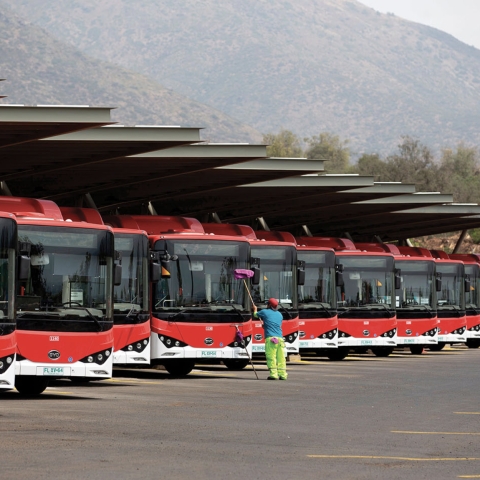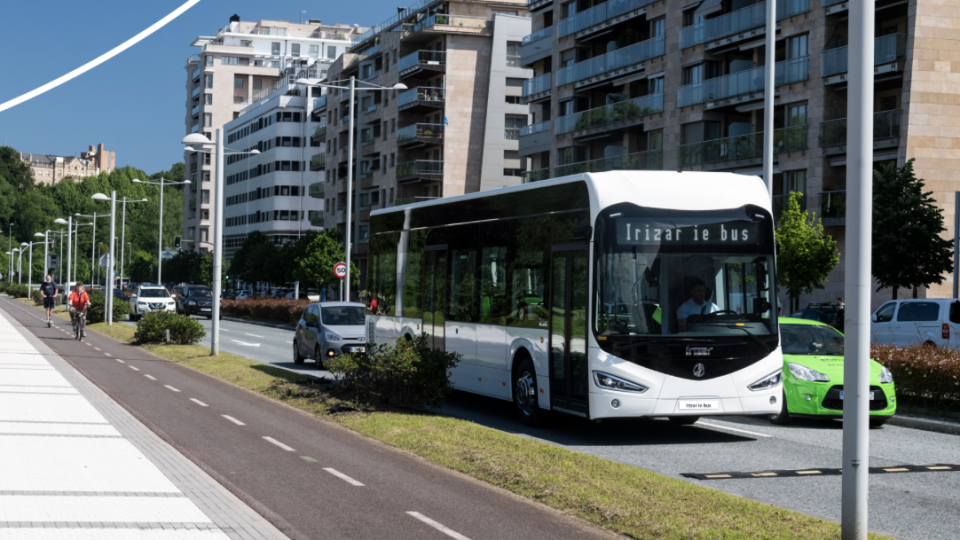Santiago de Chile’s new tender for public transport services include 1,200 e-buses
A new tender in Santiago de Chile has been issued in mid-December 2023 to renew 30 percent of the public transport system Red Movilidad. The tender provides for the introduction in the network of 1,200 zero emission buses (out of 2,100 new buses) and ’embraces’ 121 routes (15 of those are new) managed by 5 […]

A new tender in Santiago de Chile has been issued in mid-December 2023 to renew 30 percent of the public transport system Red Movilidad. The tender provides for the introduction in the network of 1,200 zero emission buses (out of 2,100 new buses) and ’embraces’ 121 routes (15 of those are new) managed by 5 business units.
As a result of this tender, 50% of the Red Movilidad fleet will be converted to electric traction.
According to a recent study by Centro Mario Molina Chile, together with the ZEBRA (Zero Emission Bus Rapid-deployment Accelerator) partnership of C40 and ICCT, the economic competitiveness of electric buses resulted in a TCO 32% lower than the TCO of their diesel counterparts.
Latin America appears to be a performance leader when it comes to electric bus deployment. As of late 2023, there were 5,083 electric buses in operation across Latin America (over 2,000 are in Chile, where Chinese Foton is the most represented manufacturer thanks to a deal landed in 2022 for over 1,000 e-buses) according to the E-Bus Radar launched in May 2020.

Santiago de Chile issues new tender for public transport
In addition to electromobility, Red Movilidad’s new 2023 tender stands out for its emphasis on safety for drivers and users, gender and accessibility for different types of mobility.
The municipalities of La Granja, San Miguel, San Ramón, San Joaquín, La Florida, La Pintana and Pedro Aguirre Cerda are among the areas that will benefit and will have more than half of their services in the tender process, states a press note by Directorio de Transporte Público Metropolitano. In the case of the commune of San Joaquín, this modernisation of the services of the Red Movilidad system reaches 72%.
The tender was anticipated in 2022 by a market consultation carried with bus manufacturers, in order to collect background information, experiences and proposals for technical aspects to be implemented in the new Red Movilidad buses, focusing on “zero emissions” technologies.
Bus tender in Santiago de Chile
The Minister of Transport and Telecommunications, Jorge Daza, indicated that “with this tender we are taking a very important step in the improvement and modernisation of Santiago’s public transport system, impacting more than 3.5 million users who use it every day in the capital. San Joaquín will be one of the 32 communes that will benefit from the renewal of 1,200 new electric buses, improving the quality of life of its residents with more comfortable, safer and quieter journeys. With this, Santiago will also reach 50% of the Red Movilidad fleet as electric, fulfilling the commitment of President Boric’s Government to move towards a modern, safe and sustainable public transport”.
Paola Tapia, director of Metropolitan Public Transport (she contributed to our VideoSpotlight on “Electrification of bus fleets in the America”), said that “we have been working on this process for months, including a stage of citizen participation, gathering the opinion of the market and also of experts. This new transformation is designed for users, including better accessibility conditions, more spaces for preferential seating and even for assistance dogs. We want to continue advancing in a closer and more efficient transport for everyone“.
The mayor of San Joaquín, Cristóbal Labra, said that “I want to point out something very important, that buses give dignity. And that is what the citizens of San Joaquín require, but also of Chile as a whole, that public transport should be dignified, and without a doubt, since the arrival of director Paola Tapia, the government and the ministry have been concerned that this should happen. And we are on the right way with these buses, with air conditioning, USB and a series of other benefits. It’s really something that will give more dignity to our journeys. Making public transport more dignified is fundamental and we are very happy about this news”.







